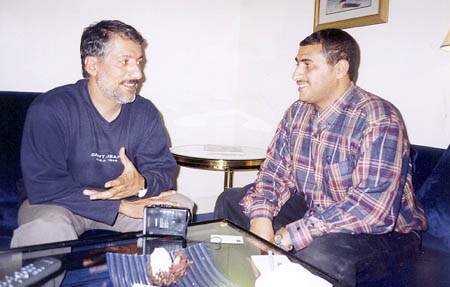Border Agreement:Why is It a Legend? [Archives:2000/31/Law & Diplomacy]
Why is It a Legend?
Ali Saif Hassan
Nasserite Party
I was surprised at the absence of Saudi diplomats or residents during the symposium. I do not know if they were not invited or they did not want to come. If the latter was the reason, it means that they are not ready yet to interact with the Yemeni civil society and non-governmental organizations.
I will try to find answers to three questions; what’s happened, Why it’s happened and what next. The first is the simplest. An examining view at the new map will tell us that the size and boundaries of Yemen has been identified to be more than half of the Yemeni region. In other words the area of the State of Yemen has from June 12, 2000 exceeded somewhat half of Yemen’s region.
The Imam, when marking the border lines dividing the two countries compensated that with a number of articles that controlled the relationship between the two countries. There was no sense of such a compensation in the 2000 treaty.
In response to why it happened, which is more difficult, I will begin with the statement of Dr. Al-Iryani in which he described the event as a legend. I wonder why he called it so. I am sure that Dr. Al-Iryani is clever and scientific in his judgments. He has a Ph.D. degree from an American university in agricultural economy and his knowledge depends on Science and scientific methods!
I think that he called it a legend because it needs no justifications. Legends need not to be explained. When he was asked why that happened, he fenced with the question. This does not mean that he did not know the answer. He knew it. May be he felt that it was not good for Yemen to say it.
According to the information beforehand, Yemen suffers a weak economy, lack of economic and natural resources, population explosion, corruption, political crises, all of which suggest that Yemen in the future will be weaker than today. One wonders, why Saudi Arabia agreed to sign the treaty now while it could have waited for the weaker tomorrow of Yemen which may guarantee more privileges in its favor.
I think that, it feared that Yemen might be weaker to the extent that it would be unable to sign the treaty.
——
[archive-e:31-v:2000-y:2000-d:2000-07-31-p:./2000/iss31/l&d.htm]


